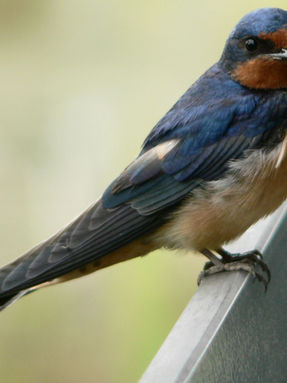top of page

Barn Swallow
Scientific Name:
Hirundo rustica
Type:
Bird
Habitat:
Open areas with water, and some structures; coastal areas, parks, marshes and agricultural areas
Range:
Found around the world, nesting in the Northern Hemisphere and wintering in the Southern hemisphere, from sea level to 10,000 feet in elevation
Status:
Least Concern (IUCN Red List)
This species is
NATIVE
to the Truckee Meadows.
Identification:
Barn swallows have a majestic cobalt blue back, and wings, with tawny to white underparts. The most defining characteristic of barn swallows is the exceptionally long outer tail feathers that give them the appearance of a deeply forked tail. About the size of a sparrow, barn swallows are 6 to 7.5 inches in length, 0.6 to 0.7 ounces in weight, and have a wingspan of 11.4 to 12.6 inches. Barn swallows can be observed gracefully flying low over the water or fields, quickly changing directions to catch and eat flies and other insects. As their name would imply, Barn Swallows make their mud cup nests under the eves of barns, and other buildings, as well as under overpasses and bridges.
Fast Facts:
In 1886 George Bird Grinnell penned an editorial to Forest & Stream raising concern about the loss of Barn Swallows to the hat making industry that killed the birds to use the long tail feathers in ladies hats. The plight of Barn swallows and other birds, brought to attention by George Bird Grinnell, lead to the foundation of the first Audubon society.
Are we being followed? Barn swallows will sometimes follow tractors, cattle or people as they flush out the insects, allowing Barn swallows to swoop in and nab the bugs.
Sources:
Contributor(s):
Regina Hockett (research & content)
Kevin Lynch (edits & page design)
Last Updated:
26 de agosto de 2024, 22:03:31
bottom of page
_edited_p.png)








